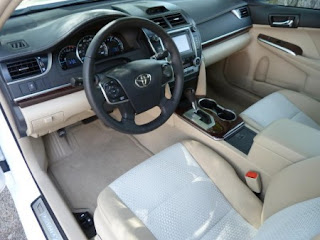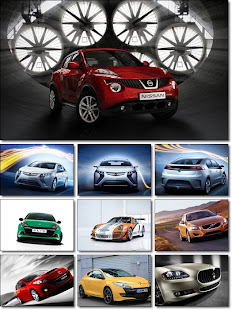Back in 1994, I bought a brand new Toyota Camry. It drove like an underpowered Mercedes with an advanced sixteen valve, four-cylinder engine. Unbelievably quiet, refined, and durable beyond compare. The Camry offered a level of quality back then that most other automakers couldn’t match at even twice the price.
This good news spread throughout the land. Within eight years, everyone in my family along with millions of other new car buyers had a Camry or a Lexus ES300 in their garage. By 2002, Toyota had made the Toyota Camry a gold standard in the American marketplace and annually decimated the rest of best selling car rankings. The Camry was dominant, price aggressive, ubiquitous, and even hated.
Hated it was first and most of all by those enthusiasts who always lust for a mainstream car that can offer more thrill. If your desires were more on the pistachio and less on the vanilla side of things, the Camry was not for you. As Jim Press, when he still was at Toyota, used to say: “We make the best vanilla there is.”
Then there was a mainstream backlash. De-contenting and quality related recall issues gave a number of competitors an opportunity to convert the Camry faithful. Not to mention those who had yet joined the Camry fold.
Toyota had already been losing the conquest of non-Toyota owners due to the outgoing generation’s staid styling and it’s near-SUV like massiveness. The recent recalls and quality issues did hurt. Since 2008 Camry sales have collapsed while Fusion, Sonata and Altima have all gained ground.
The Toyota Camry has a tough road ahead. Can this brand new 2012 Toyota Camry LE carry on a once proud tradition of outclassing the competition? Or is it simply just one of the herd? The truth is…
Toyota is no longer in a dominant position. The new Camry offers a lot of virtues that the old model could not satisfy. It still does not excite.
The exterior has become trim and handsome in a way that is eerily reminiscent of the 2002 – 2006 generation. The front offers a slightly sporting pretension very much in line with today’s combination of sharp creases and low cowls. Side profile is contemporary without being bloated. The rear has removed the bloat, and to be frank… it’s a nice mainstream design. Nobody will reject the Camry for it’s good looks.
When you get into the driver’s seat, you have all the features of a nice vehicle circa 2011. The seats have good side bolsters. Toyota’s new Entune multimedia system allows you to perform a slew of modern commands and conveniences. From getting movie tickets. To getting directions and restaurant reservations. To letting you use your cell phone in a hands off by integrating your phone’s features and contacts with those of the Entune’s wireless system. Toyota will even upgrade this system as new features become available… and the system’s ease of use is commendable. Nobody will reject the Camry for it’s multimedia features.
The interior offers many of the elements of Toyota’s better selling models. The thin stitching of the dashboard is carried forward from the Lexus CT200h while many of the controls seem to be derivative of other upscale models like the RX and Highlander. The steering wheel is nice, thick, and has a quality feel to it. To be frank, the only weaknesses in the interior are the wafer thin wood and aluminum accents. Along with the cheap plastic buttons that surround the standard sound system controls and optional Entune system. A weakness that is shared with every one of the Camry’s modern day competitors. Nobody will reject the Camry for it’s interior quality. It leads the midsized segment.
The Toyota Camry will hold the line well at $22,500 for the LE version which is $200 cheaper than the outgoing model. The 2.5 iter 4-cylinder engine offers 178 horsepower along with a class matching 28 combined mpg (26 city / 35 highway). 10 airbags, a long list of vehicle safety control systems, and an anticipated 5 star NCAP and IIHS safety rating will likely make the Camry LE a class leader. Nobody will reject the Camry based on the specs.
The handling and suspension tuning is also at the head of the pack. The outgoing model didn’t do Toyota any favors when it came to attracting buyers seeking some sport in their drive. The new model is a tour de force. There is a precision in handling, and a flatness in the cornering, that is as unexpected as it is alluring. If Toyota were the only one offering this level of performance in today’s marketplace, it would be 1994 all over again (albeit a 1994 Camry SE). Nobody will reject the Camry based on how it drives. But then again…
The Camry has a lot of competition: Altima, Fusion, Optima and Sonata, just to name a few. The Altima 2.5 and Fusion SE offer comparable specs to the Camry LE without the reputation baggage of being the car of choice for older folks.
Are they better cars? Time will tell. But even with the Camry offering better fuel economy and safety than either Ford or Nissan models, and comparable real world handling, the Fusion and Altima will continue to be perceived as more sporty and youthful than the Camry. Still, some people might reject the Camry for it’s reputation as an ‘older persons’ car. Even if the content measures up.
The Optima and Sonata have the added advantage of price and warranty. The Sonata and Optima are approximately $1800 cheaper if you look headlong into the MSRP. When you start looking at features and advantages, the deficit narrows considerably. But in this marketplace the price advantage is partially one of perception. A car that seems to be the better deal may be chosen over the better car.
Then there is the warranty. Toyota only subtly acknowledged the recent recall issues during the press event. Paying stronger attention to the vast reduction in inventory from 250,000 cars to 113,000 due to the tsunami. That is not what shrank Camry’s marketshare from 18.8 percent in 2009 to 13.8 percent today.
The reality is that a 10 year / 100,000 mile warranty offers a lot of peace of mind for folks who are looking beyond the Camry. The Hyundai/Kia models do turn off some buyers who don’t like the more aero and European look. On the other hand, the design has been a net plus with both vehicles now selling at their manufacturing capacity in a depressed market. Still, some people might reject the Camry for other cars offering a more European design and a longer warranty.
Overall, I believe the Camry LE will lose some folks who want the ‘sporty’ car along with all the usual virtues of a class leading midsized sedan (high content, safety, and reliability). It will inevitable lose sales to the Hyundai/Kia juggernaut that now offers a better warranty and a cheaper price. Who knows? It may even lose sales to the next gen Malibu? Or the Passat which offers an authentic European reputation wrapped up in an all-American design?
The Camry will not lose any sales to any of these current competitors in the one metric which matters most. Is this Camry the better car? Time will tell on the long-term measure of durability and owner satisfaction. But when you look at the overall fuel economy, safety, reliability, and comfort of the Camry, the answer will likely be an emphatic yes.
The 2012 Camry LE should inevitably overcome the baggage of the recent past. It’s a great car that doesn’t turn off most of the mainstream buyers who seek ownership contentment for the next 10+ years. It’s a bullseye…. among a midsized segment that seems to attract more bullseyes than ever.







 8/26/2011
8/26/2011
 chienngoc1990
chienngoc1990










































